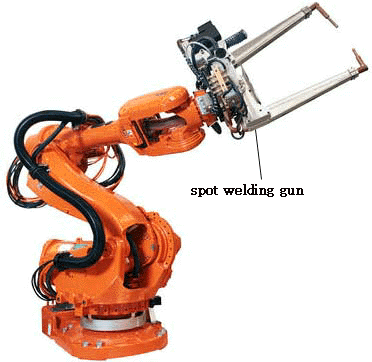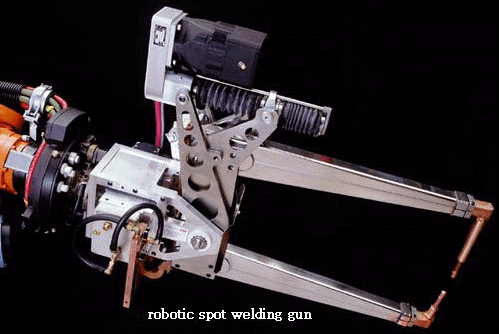|
점용접 gun(spot welding gun)
Spot welding guns are normally designed to fit the assembly. Many basic types of guns are available, the two
most commonly used being the direct acting type, generally known as a "C"-type gun, where the operating cylinder
is connected directly to the moving electrode, and the "X"-type (also known as "Scissors" or "Pinch") where
the operating cylinder is remote from the moving electrode, the force being applied to it by means of
a lever arm. C guns are generally the cheapest and the most commonly used. There are many variations available
in each basic type with regard to the shape and style of the frame and arms, and also the duty for which
the gun is designed with reference to welding pressure and current.
|
|||
|
1. hanging spot welding gun or supension spot welding gun (작업자가 spot welding gu을 매달아 놓고 작업하는 것과 cable에 따라 spot welding gun을 이동하면서 용접한다.)
It is suitable for welding lap point weld steel sheets and box bodies or the enclosure
body of a wide variety of coaches, car bodies, refrigerators, and washing
machines among others.
|
|||
|
2. robot mounted spot welding gun (robot가 robot에 장착된 spot welding gun을 이동 시키면서 용접한다.)  
A robot can repeatedly move the welding gun to each weld location and position it perpendicular to the weld seam.
It can also replay programmed welding schedules. A manual welding operator is less likely to perform as well
because of the weight of the gun and monotony of the task.
|
|||